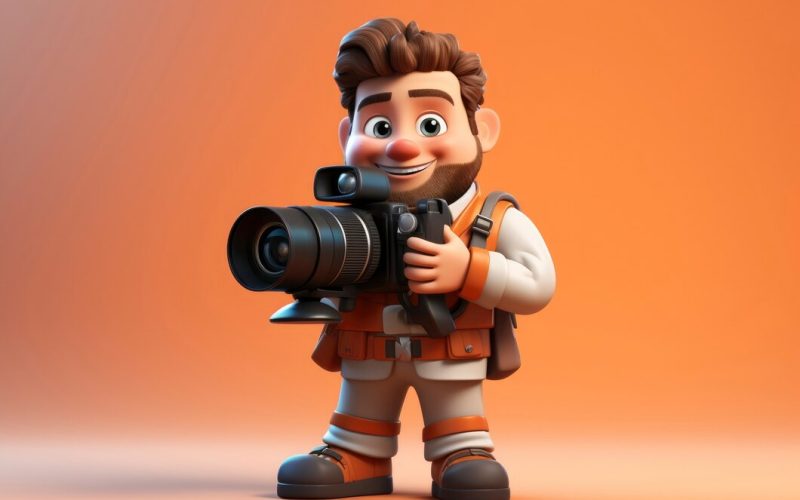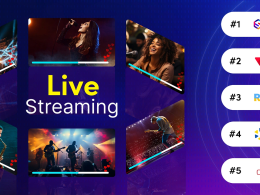Introduction
In recent years, the entertainment landscape has undergone a significant transformation. The advent of streaming platforms has not only altered how we consume content but also what kind of content we consume. Among the most fascinating trends to emerge from this shift is the rise of animated documentaries. Combining the factual rigor of traditional documentaries with the creative liberties of animation, this hybrid genre has captivated audiences and critics alike. This article delves into the factors contributing to the growing popularity of animated documentaries, their unique storytelling techniques, and their impact on both audiences and the film industry.
The Evolution of Documentaries

-
Traditional Documentaries
Historically, documentaries have been a cornerstone of factual storytelling, offering viewers a window into real-life events, people, and issues. Traditional documentaries rely heavily on live-action footage, interviews, and archival material to construct their narratives. While this approach has produced countless compelling films, it also comes with limitations, particularly when dealing with abstract concepts, historical events with limited visual records, or sensitive subjects.
-
The Advent of Animation
Animation, on the other hand, has long been associated with fictional storytelling, particularly in genres aimed at younger audiences. However, the potential of animation to convey complex ideas, emotions, and narratives has always been vast. Over the years, animated films and series have evolved to cater to more mature audiences, exploring themes ranging from existentialism to social justice.
Technological Advancements Boosting Animated Documentaries
Advancements in animation software and technology have played a pivotal role in the rise of animated documentaries. Today, animators have access to sophisticated tools like CGI (computer-generated imagery), motion capture, and rotoscope techniques that were not widely available in earlier years. These technologies allow filmmakers to produce highly detailed, visually stunning animations that enhance storytelling. The availability of such tools has also made animation more accessible to a broader range of filmmakers, helping to democratize the production process and expand the genre’s reach. The result is a growing diversity in the style and scope of animated documentaries, from minimalist, hand-drawn animations to hyper-realistic digital renderings.
The Convergence: Animated Documentaries

-
A Perfect Marriage
The marriage of animation and documentary filmmaking has opened new avenues for storytelling. Animated documentaries leverage the strengths of both mediums, using animation to visualize concepts that are difficult or impossible to capture with live-action footage. This approach allows filmmakers to explore a broader range of subjects, from historical events to personal memoirs, in a more engaging and imaginative manner.
-
Notable Examples
Several animated documentaries have garnered critical acclaim and mainstream success, paving the way for the genre’s rise in the streaming era. Films like Waltz with Bashir (2008), which explores the 1982 Lebanon War through the director’s personal recollections, and Tower (2016), which recounts the 1966 University of Texas tower shooting through a blend of animation and archival footage, have showcased the powerful potential of this hybrid genre.
The Role of Streaming Platforms

-
Accessibility and Reach
Streaming platforms like Netflix, Hulu, and Amazon Prime Video have played a crucial role in the rise of animated documentaries. These platforms offer filmmakers the opportunity to reach a global audience without the traditional constraints of theatrical releases. As a result, animated documentaries that might have struggled to find a wide audience in the past can now gain significant exposure and viewership.
-
Diverse Content Libraries
Streaming platforms are constantly seeking diverse and unique content to differentiate themselves in a competitive market. Animated documentaries, with their distinctive visual style and innovative storytelling, fit this bill perfectly. Platforms are increasingly investing in and promoting animated documentaries, recognizing their potential to attract and engage viewers.
The Appeal of Animated Documentaries

-
Visual Innovation
One of the most compelling aspects of animated documentaries is their ability to visualize the unseen. Animation can bring to life historical events, abstract concepts, and personal memories in ways that live-action footage cannot. This visual innovation enhances the storytelling experience, making complex or difficult subjects more accessible and engaging for viewers.
-
Emotional Resonance
Animation also has a unique ability to evoke emotions. The stylized nature of animation can create a sense of intimacy and empathy, drawing viewers deeper into the narrative. This emotional resonance is particularly powerful in documentaries that deal with personal stories, trauma, or social issues, allowing audiences to connect with the subjects on a deeper level.
-
Creative Freedom
Animated documentaries offer filmmakers greater creative freedom. Without the constraints of live-action production, filmmakers can experiment with different visual styles, narrative structures, and techniques. This creative freedom results in a diverse array of animated documentaries, each with its own unique aesthetic and storytelling approach.
Animated Documentaries as a Tool for Social Change
Animated documentaries are becoming a powerful medium for social commentary and change. By using animation, filmmakers can tackle sensitive and controversial topics, such as racism, immigration, and gender inequality, in ways that resonate with viewers while avoiding the harshness of real-world footage. Animation also allows for more symbolic or metaphorical representations of these issues, offering a fresh perspective that can challenge the viewer’s preconceived notions. Many animated documentaries, such as “Persepolis” (2007), have been used to highlight marginalized voices, making the genre a potent tool for advocacy and activism. This trend is likely to continue as audiences seek out content that not only informs but also inspires change.
Impact on the Film Industry

-
Expanding the Documentary Genre
The rise of animated documentaries is expanding the boundaries of the documentary genre. By incorporating animation, filmmakers can tackle a wider range of subjects and experiment with new storytelling techniques. This expansion is enriching the documentary landscape, offering audiences fresh and innovative content.
-
Influence on Traditional Filmmaking
The success of animated documentaries is also influencing traditional filmmaking. Filmmakers across genres are increasingly incorporating animated sequences into their work, recognizing the potential of animation to enhance storytelling. This cross-pollination is fostering greater creativity and innovation within the film industry.
-
Opportunities for Animators
The growing popularity of animated documentaries is creating new opportunities for animators. Traditionally, animators have been confined to the realms of fiction and entertainment. However, the rise of animated documentaries is opening up new avenues for animators to apply their skills in the realm of factual storytelling, broadening their career prospects and creative horizons.
The Future of Animated Documentaries in Education
As animated documentaries continue to rise in popularity, they are finding a place not only in entertainment but also in education. Educators are increasingly recognizing the value of documentaries as a learning tool. They provide an engaging way to present historical events, scientific concepts, and social issues to students. The visual and narrative elements of animated documentaries can make complex subjects easier to grasp, especially for younger audiences or those with different learning styles. Educational institutions are beginning to incorporate animated documentaries into their curricula, further solidifying the genre’s importance beyond entertainment.
Comparing Animated Documentaries with Live-Action Documentaries
| Feature | Animated Documentaries | Live-Action Documentaries |
| Visual Creativity | High artistic flexibility; can depict abstract or complex ideas | Limited to reality and available footage |
| Emotional Depth | Can visualize emotions and thoughts in metaphorical ways | Relies on interviews, reenactments, and real-world footage |
| Realism | Offers a stylized, interpretative version of events | Focuses on capturing reality as it is |
| Recreation of Historical Events | Can recreate events that lack visual documentation | Depends on archival footage and re-enactments |
| Accessibility for Sensitive Topics | Can soften harsh visuals for sensitive or traumatic content | Real footage can be harder to watch and more graphic |
Analysis of the Success Factors of Animated Documentaries
| Factor | Description | Impact |
| Artistic Freedom | Animation allows for creative storytelling beyond real-world limitations | High opens the door to more complex and imaginative narratives |
| Audience Engagement | Animated visuals attract viewers, especially younger demographics | High offers a fresh viewing experience for audiences tired of traditional formats |
| Diverse Topics | Ability to cover subjects that are hard to visualize in live-action | Medium appeals to niche audiences interested in unique storytelling |
| Emotional Impact | Animation can enhance emotional resonance by visualizing intangible concepts | High has proven successful in personal and emotionally charged stories |
Conclusion
The rise of animated documentaries in the streaming era represents a significant and exciting development in the world of filmmaking. By combining the factual rigor of traditional documentaries with the creative possibilities of animation, this hybrid genre is offering audiences new and engaging ways to explore real-life stories and issues. As streaming platforms continue to seek diverse and innovative content, the future of documentaries looks bright, promising to further enrich the landscape of documentary filmmaking.










